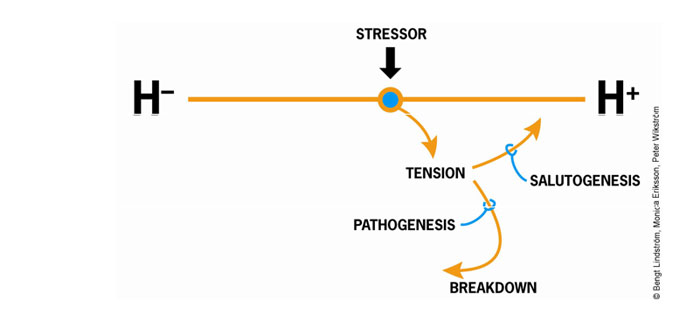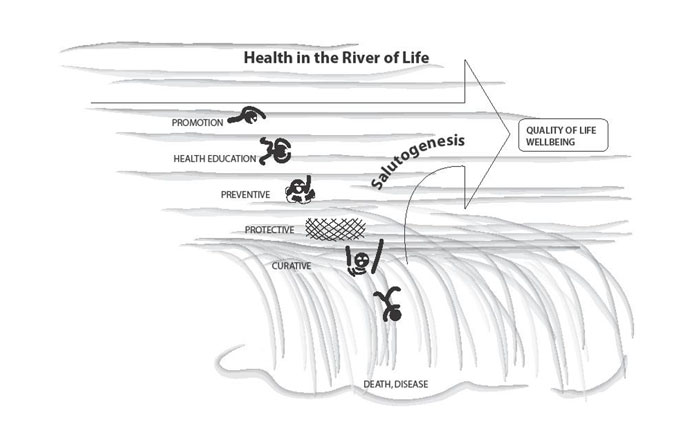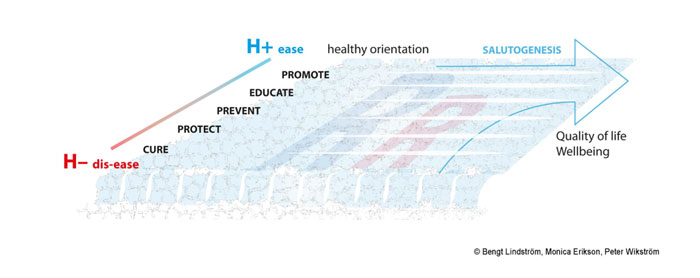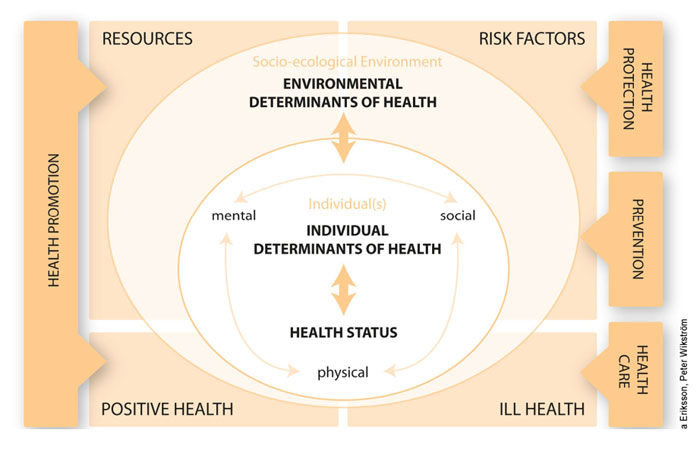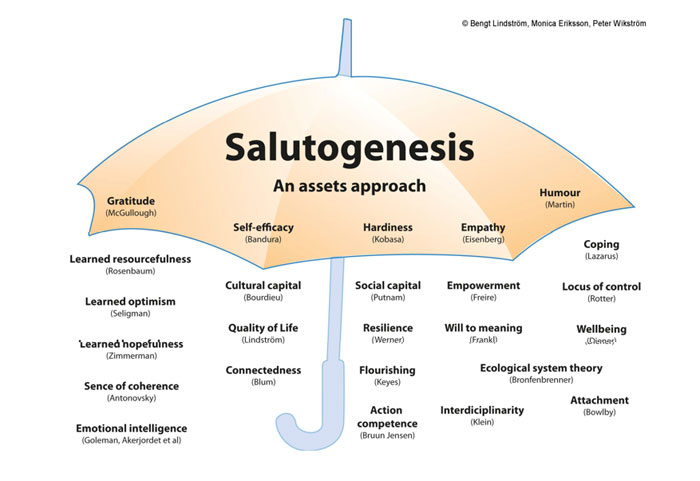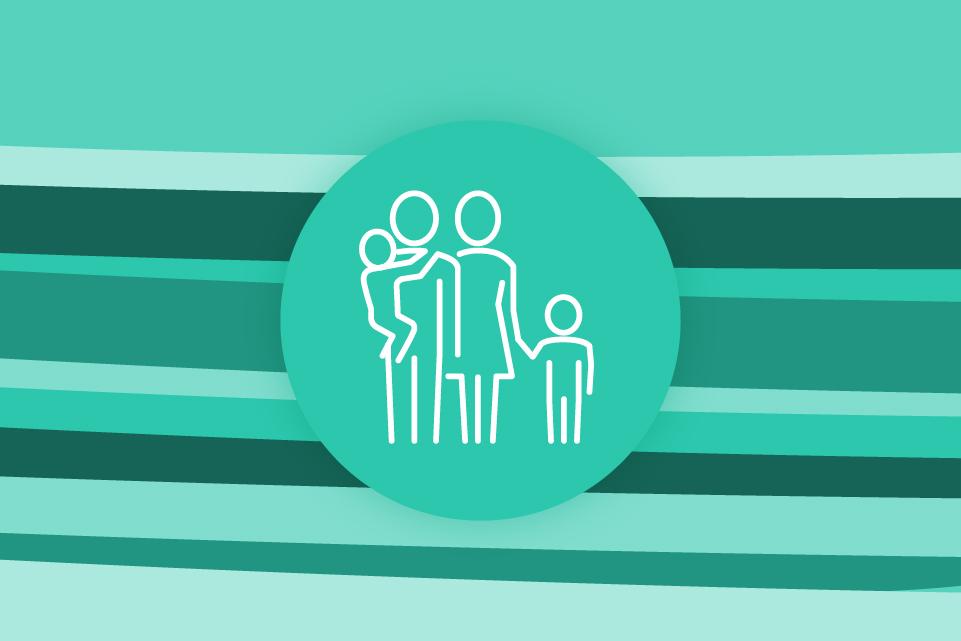Author Professor Bengt Lindstrom MD PhD DrPH is Professor of Salutogenesis and Health Promotion at the Nordic School of Public Health, Gothenberg, and Director of Health Promotion Research at the Folkhälsan Research Center, Helsinki.
What generates health? What makes us move in the direction of health? These simple and original questions created an opening to a new way of thinking in health research. It was raised in the late 1970s by Aaron Antonovsky, a medical sociologist interested in stress theory who had undertaken a traditional epidemiological study on the effects of menopause on women who had undergone extremely stressful life events, some of them had survived the Holocaust. Compared to the control group most of these women were struck much harder by stress and carried more symptoms related to the menopause. However, there was a small group of women who, in spite of these extreme negative life experiences, managed life just as well as the ordinary woman.
Had Antonovsky ignored these results and viewed them as non-significant in statistical terms, we would probably stand without this completely new framework for health, the salutogenesis, addressing the question of the origin of health. Instead he was intrigued, how was it at all possible that persons who had suffered such extreme conditions as the Holocaust were able love, carry on with ordinary life, create good social relationships and manage children, family and work - not having a severely dysfunctional life as most of them did. Antonovsky said, “Had it been just one woman, it would still have been important to find out why!”
The women were interviewed in depth. On basis of a qualitative analysis of the results Antonovsky begun to form a new theory of health, the direction of health or a healthy life orientation he named the Sense of Coherence Theory. Further, he constructed a questionnaire, called the Life Orientation Questionnaire based on interviews of these women. The reliability and validity of the instrument, has later been assessed as good. To make it short: it seems these women were able to use their internal and external resources in a health promoting way. They were able to reflect and draw conclusions based on their earlier life experiences in a new situation and in a flexible way re-orientate their life in a constructive and meaningful direction conducive to overall health.
Antonovsky´s own way of explaining the health continuum and the salutogenic direction Antonovsky himself drew the health continuum or as he said the fully appropriate term “the ease/dis-ease continuum” as a horizontal line between total absence of health (H-) and total health (H+)and explained that all people are positioned somewhere on this line (Antonovsky 1987). We encounter stressors every day that we have to deal with. Stressors can upset our position and we come under tension. Here there are two options either the pathogenic forces overtake us and we break down or we regain our health through salutogenesis and move towards H+. Conceptually salutogenesis means the movement towards the H+
The philosophical question trying to respond to what creates health, in addition, having a method to measure this raised interest in the world of science causing many debates and questions in medical sociology, psychology and medicine extending to health care and public health. There were some preliminary mutually supportive discussions with some of the key actors of the newly formed health promotion movement. Research was initiated in many places. Antonovsky set up a Newsletter and the scene was set for a continuous exploration of this new area in health research based on the development of resources for health, instead of as before, only studying risks and disease. Then Antonovsky died suddenly in the early stage of cancer treatment and the momentum and natural focus point of salutogenic research was lost. Research continued but without its natural leader.
After Antonovskys death research continued all over the world, however, nobody consolidated the research nor brought the whole picture together again. In 2005 the Health promotion Research Programme at the Folkhälsan Research Centre in Helsinki, Finland, decided to initiate the ambitious task of trying to find out what the potential of the salutogenic approach to health was. This initiative was an attempt to continue Antonovsky´s earlier work and collect and systematically review and analyse all studies in the world focused on salutogenesis.
The initiators had previously been in personal contact with Antonovsky from the early 1980s until he died. The understanding of salutogenesis had been developed in depth in a direct dialogue with its creator. A set of research criteria was established and through systematic search of the major sources and databases and other literature the image of the effectiveness of salutogenesis begun to take shape. There were also direct contacts with other researchers to clarify details and finally an updated contemporary profile of this research area of scientific knowledge emerged. This was then analysed systematically and presented in scientific journals and scientific papers in conferences.
In 2007 the key international scientific and professional organization of Health Promotion, the International Union of Health Promotion and Education gave the Folkhälsan Research Centre the task to establish and run the Global Working Group on Salutogenesis and coordinate this research and development on a world basis. Since then a continuous systematic analytical review of research on salutogenesis has been in effect. All this has made it possible to draw better conclusions on the potential of the salutogenic approach because the evidence base is systematically refined and also extensively covers research from the whole world.
Traditionally, the difference between the biomedical model and public health has been described metaphorically as a river. The following stages are described moving up the river: cure or treatment of diseases; health protection/disease prevention; health education and, finally on top, health promotion. Health promotion holds a rather different perspective relating mainly to resources for health and life not primarily risk and disease. All approaches ultimately strive to improve health, but out of different perspectives.
This is a classic image called The River of Health where ‘the down-river bias’ focuses on processes where the risk exposure already may have caused damage (cure, protection, prevention and often health education). The health concept in this paradigm is constructed from the understanding of disease, illness and risks. However, in the health promotion approach we bring the focus upstream finding resources, initiating processes not only for health but wellbeing and quality of life. This classic image explains the difference between care, protection, prevention and health education and opens for health promotion.
From the River of Health to the River of Life
In the salutogenic approach we focus on the direction towards health. The ultimate objective of health promotion activities is to facilitate prerequisites for a good life. Perceived good health is a determinant for quality of life. Antonovsky did not live long enough to elaborate on these images. In our reading and thinking on salutogenesis we have changed the river into a different and more salutogenic framework placing Health in the River of Life. Here the main flow of the river is in the direction of life while illness, disease and risks are seen as the disruptive forces one will encounter in life but life is the main force and the main direction.
Antonovsky explicitly talked about resources for life and constructed a life orientation questionnaire, the SOC questionnaire. Antonovsky’s ease/dis-ease continuum is placed vertically. To explain the shift of paradigm of the salutogenic framework, the metaphor of the river needs to be different. This is Health in the River of Life (Eriksson and Lindström 2008). Here the river flows vertically across your view. Along the front side of the river, there is a continuous waterfall following the whole stretch of the river meaning wherever you are there is always a possibility to encounter risks, disease and death. However, the main flow and direction of the river is not down the waterfall but running vertically in the direction of life. At birth, we drop into the river and float with the stream and over life learn how to swim. Some are born at ease where the river flows gently, where there is time to learn, where one can float and the prerequisites for life are good with many resources at disposal, like being born in a welfare society. Others are born close to the waterfall, at dis-ease, where the struggle for survival is hard and the risk of going over the rim is much greater.
The river, just like life, is full of risks and resources, however, our outcome is based on our orientation and learning through our life experiences. Thus acquiring an ability to identify and use the resources necessary to improve our options for a better health and ultimately life. Over time the experience of a risk can eventually develop into a resource, risk and resource thus become relative concepts. The health process can be seen as a life-long-learning process where we reflect on what will create health and what are the options for life and improves QoL. If we never ask these questions we never know the answers and never learn. Before Antonovsky these questions were not asked systematically in health science.
Regarding the assumptions and predictions of Antonovsky the evidence is affirmative in most respects. A salutogeneic approach will not solve all the problems of health. There is a need to combine the actors in the area of health, medicine, public health and health promotion to create synergy in health research and practice. It must be clear we by no means have all the answers today. This is only a new and different starting point, an opening for a new arena of research and practice in health science. Presently it is partly a patch work with ‘white areas on the map’. However, 30 years later we know much more abou
t salutogenesis than Antonovsky ever knew. He only spent 15 years with salutogenesis and made assumptions he at that time could not confirm due to the lack of evidence. Today we have more than 30 years of research and new evidence that either supports or rebukes his original assumptions. Overall his basic assumptions were correct. The evidence base is now much more solid and gives a clearer direction for future research and implementation of salutogenic approaches. However, one must not neglect the fact that there is just as much a need to understand pathology, cure and prevention in combination with salutogenesis.
Summary: The General Knowledge Basis on the Effectiveness of the Salutogenic Approach to Health
The existing epidemiological evidence supports Antonovsky´s assumption that the Sense of Coherence or the ability to identify and use one’s health resources’ is a key capacity for people´s ability to gain health and have a healthy orientation in life. This is probably a very effective way to establish prerequisites for a long and productive life of good quality on both an individual and population basis. There are today some other theoretical frameworks “under the salutogenic umbrella” and models demonstrating similar correlations.


